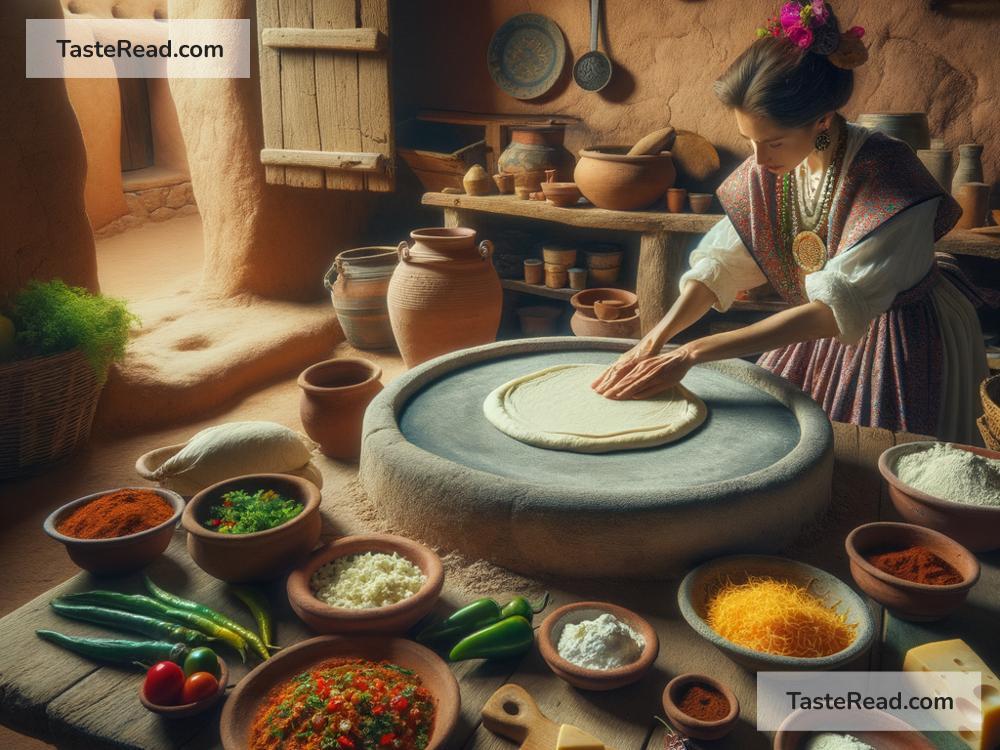Origins of the First Quesadilla in Folklore
The quesadilla is one of the most beloved dishes of Mexican cuisine, enjoyed by people worldwide for its warm, cheesy goodness tucked inside a soft tortilla. But have you ever wondered how this iconic dish came to be? While historians often focus on the ingredients and evolution of recipes, folklore offers us imaginative and fascinating stories about the quesadilla’s origins. These tales don’t always align with historical facts, but they provide cultural and emotional connections to food. In this article, we explore the folkloric beginnings of the first quesadilla, complete with mythical creatures, old traditions, and a pinch of magic.
A Tale of Hungry Farmers
One popular folkloric story about the quesadilla traces its roots back to the early days of farming in pre-Columbian Mexico. According to legend, farmers working long hours in the fields needed a snack that was easy to carry and quick to make. One day, a farmer named Mateo, exhausted after planting corn all morning, sat down under a shade tree with a handful of masa (corn dough) and some leftover cheese he had been carrying in his satchel.
With no cooking tools or kitchen nearby, Mateo improvised. He flattened the masa into the shape of a thin disk, placed the cheese inside, and folded it in half. He then cooked it directly on a stone heated by the sun, using nothing more than his creativity and a little patience.
When Mateo bit into the cheesy, warm creation, his hunger instantly disappeared. Legend says that Mateo shared his improvised snack with other farmers, who started making their own versions using beans, meat, and squash. Over time, this humble creation evolved into the quesadilla we know today.
The Goddess of Corn and Cheese
Another piece of folklore attributes the invention of the quesadilla to Tlazohteotl, the Aztec goddess of fertility, agriculture, and love. This legend explains that corn, a sacred crop of the Aztecs, was a gift from Tlazohteotl herself. But according to the tale, she didn’t stop at giving the people corn; she wanted them to discover new ways to prepare and enjoy it.
One day, Tlazohteotl appeared to a young baker named Xiomara in a dream. She showed Xiomara how to make tortillas from masa and cook them on a clay griddle called a comal. Then she instructed the baker to place cheese—a rare and valuable ingredient at the time—inside the tortilla before folding it in half. Xiomara awoke with vivid memories of the dream and immediately tried to follow Tlazohteotl’s instructions.
Her first attempt produced a delicious quesadilla, filling her kitchen with an irresistible aroma. The neighbors, curious about the smell, knocked on Xiomara’s door to see what she was cooking. She shared her quesadilla with everyone, and the love for this dish quickly spread throughout her village.
According to the legend, Tlazohteotl was pleased that her gift had been embraced by the people. To this day, some locals in Mexico believe that each quesadilla contains a small blessing from the goddess herself, especially if it’s made with care and love.
The Trickster Coyote
The third folkloric tale surrounds the mischievous Trickster Coyote, a creature that appears often in Native American and Mesoamerican mythology. Coyote was known for his clever but capricious nature, often causing trouble for humans and other animals. However, his antics sometimes led to surprising inventions and discoveries.
In this story, a wise woman named Abuela Rosa was making tortillas at her outdoor kitchen when she spotted Coyote lurking nearby. She had seen him steal food many times before and decided to teach him a lesson. Instead of preparing plain tortillas, she added cheese to them, folded them in half, and cooked them until crispy. She placed these cheesy creations on a plate and left them within Coyote’s reach. Thinking he had stolen regular tortillas, Coyote gobbled them up.
To his surprise, the combination of warm tortilla and melted cheese was unlike anything he had tasted before. Coyote, who rarely liked human food, became curious about this new dish. He snuck back to Abuela Rosa’s house many times, secretly watching her cook quesadillas and learning her techniques. Eventually, he brought the idea to other villages, claiming it as his own invention. While everyone enjoyed the new dish, they also laughed at Coyote’s boldness and credited Abuela Rosa for her creativity.
To this day, some people jokingly call quesadillas “Coyote Snacks” in honor of this tale.
How Folklore Shapes Food
Though these stories about the quesadilla are clearly fictional, they reveal much about how people view food as a gift of invention, spirituality, and community. The quesadilla isn’t just sustenance; it’s a symbol of resourcefulness, tradition, and care. Folklore reminds us that food isn’t just fuel for the body—it’s a cultural artifact that tells stories about our ancestors and their values.
Whether or not the first quesadilla was cooked on a sun-drenched stone by hungry farmers, gifted by a goddess, or stolen by a trickster coyote, the dish carries centuries of meaning and remains a cherished part of Mexican cuisine. The next time you bite into a cheesy quesadilla, consider the rich traditions that surround it. You aren’t just enjoying a delicious snack; you’re participating in a cultural legacy filled with imagination, history, and heart.


